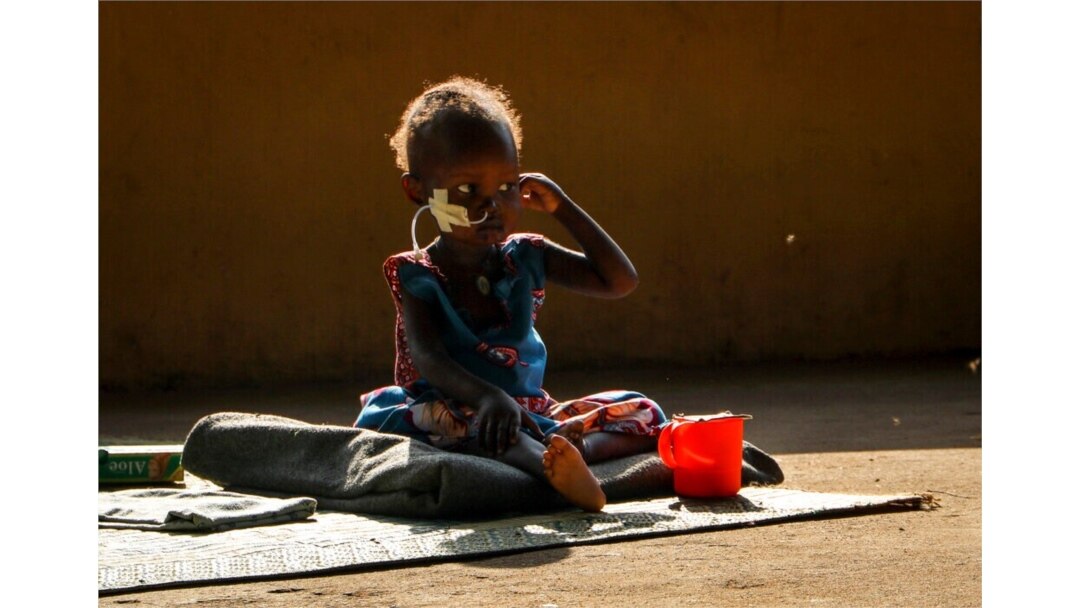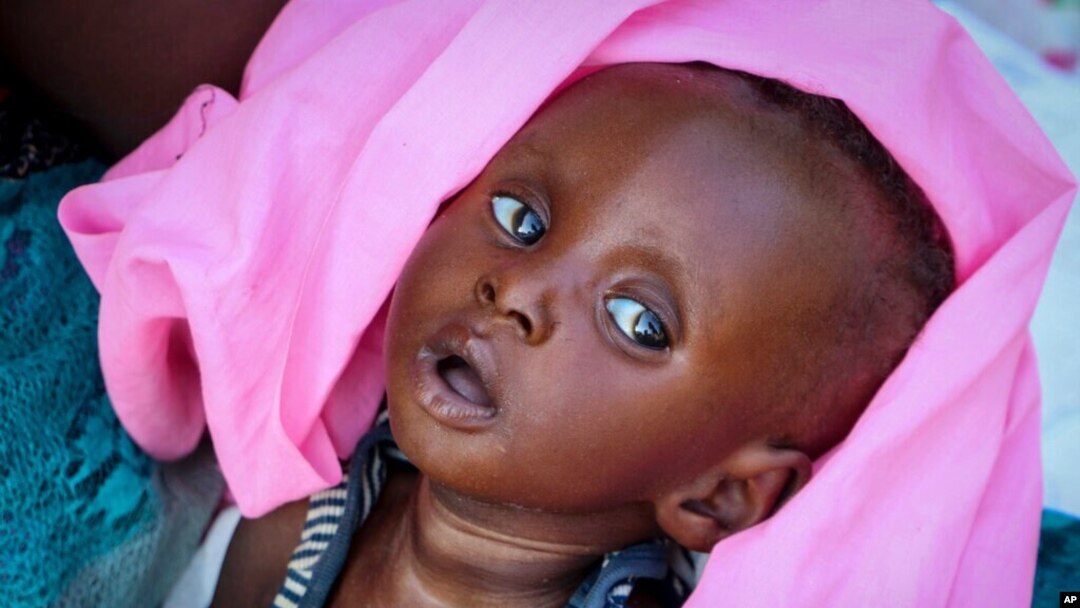Three U.N. organizations are calling for immediate humanitarian access to parts of Pibor County in South Sudan’s Jonglei state, where people have run out of food and are facing catastrophic levels of hunger, according to a report on food insecurity in the country.
The Integrated Food Security Phase Classification (IPC) report, released Friday, identified Pibor County as one of the areas experiencing a crisis level of food insecurity because of widespread flooding and insecurity, which have prevented aid agencies from delivering food.
The IPC report indicates that in the coming year, an estimated 5.8 million people in South Sudan will likely face IPC Phase 3, which is classified as acute food insecurity.
The IPC analysis estimates that by mid-2021, an estimated 7.24 million people, or 60 percent of the South Sudanese population, including about 1.4 million children under age 5, are expected to be acutely malnourished, the highest number in three years, according to the United Nations.
Poor crops, pandemic, pests
Several factors have contributed to food insecurity in South Sudan, according to Isaiah Chol Aruai, who chairs the country’s National Bureau of Statistics.
“The food security situation and nutrition situation has deteriorated," Aruai told South Sudan in Focus. "This is because of pockets of insecurity that have led to population displacement, low crop production because of climate shocks such as floods and drought, the ongoing microeconomic crisis and the effect of the COVID-19 pandemic, pests such as desert locusts, and inadequate multisectoral humanitarian assistance."

FILE - Akon Morro, 2, who is anemic and suffers from edema due to malnutrition, sits on the floor of a feeding center in Al Sabah Children's Hospital in Juba, South Sudan, Dec. 3, 2020.
The U.N. Food and Agriculture Organization (FAO), the U.N. Children’s Fund (UNICEF) and the World Food Program (WFP) issued a joint press release Friday, saying they and other humanitarian organizations were scaling up their response.
"We call on all parties to stop the violence and to ensure safe humanitarian access in order to prevent an already dire situation from turning into a full-blown catastrophe,” said FAO Representative in South Sudan Meshack Malo.
The IPC Global Support Unit released a real-time quality review report indicating populations in South Sudan’s Akobo, Aweil South, Tonj East, Tonj North and Tonj South communities all fall into the catastrophic IPC Phase 5, or acute food insecurity.
'Immediate scale-up' of aid
Aruai called for urgent humanitarian intervention.
“In order to save lives and avert total collapse of livelihoods in the affected counties, particularly those with the populations in catastrophe IPC Phase 5 and Emergency IPC Phase 4, there is an urgent need for immediate scale-up of multisectoral humanitarian assistance,” Aruai told VOA.
The IPC report identified Jonglei, Unity, Upper Nile, Lakes, Warrap and Northern Bahr El-Ghazal states as the most affected areas, with 50 percent of the population facing acute food insecurity.
Makena Walker, the WFP’s deputy country director in South Sudan, said the organization was deeply concerned about the worsening food security situation.
“The World Food Program has already begun scaling up its food and nutrition assistance response. We have extended food assistance beyond the lean season and by increasing the number of people we support,” Walker told South Sudan in Focus.
FILE - Children wash in muddy floodwaters in Wang Chot, Old Fangak County, Jonglei state, South Sudan, Nov. 26, 2020. A report issued Dec. 18, 2020, identified several areas in South Sudan experiencing crisis levels of food insecurity.
Mohamed Ayoya, UNICEF’s country representative in South Sudan, said 313,000 children were on the verge of severe acute malnutrition, which he called “extremely worrying.”
“The data that we have today leaves us with no doubt about the sense of urgency for all of us — government, donor community and humanitarian actors here in South Sudan — to join hands and ensure that all these children get the treatment they need, and they do so as soon as possible,” Ayoya told VOA.
U.N. agencies said the 2020 humanitarian appeal was underfunded and more resources were needed to support the humanitarian response in the coming months to strengthen people’s capacity to cope with looming famine in South Sudan.


